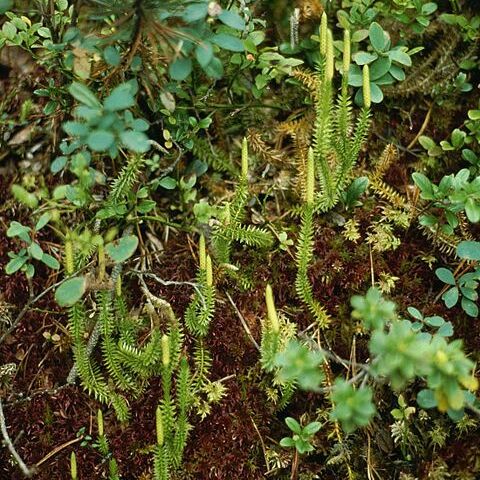Plants terrestrial, helophytic, or epiphytic, small to large. Main stems creeping, pendulous, climbing, or short and erect, mainly protostelic, rarely actinostelic or plectostelic, on substrate surface or subterranean, or forming stolons. Upright shoots once to multiple times dichotomously branched, conspicuously leafy; upper portion of stem and branchlets with or without bulbils. Lateral branches ascending or erect, dichotomously branched or nearly sympodially branched, rarely pseudomonopodially branched. Main stems and lateral branches rounded or flat in cross section. Leaves as microphylls, with 1 unbranched midrib, monomorphic, spirally arranged. Leaves on subterranean parts flat, appressed, not photosynthetic, and scalelike; leaves on aerial parts appressed, ascending or spreading, subulate, linear, lanceolate, ovate, or scalelike, not lustrous or lustrous, remote to dense and imbricate, papery, leathery, or thinly leathery, base truncate, margin entire or serrate. Strobili terminal on branchlets or main stem, abruptly becoming much smaller than or similar to sterile branches or branchlets in size, solitary, erect, nodding, or pendent, terete, sessile or stalked. Sporophylls homomorphic with or different from trophophylls, monomorphic or dimorphic, papery, margin toothed, membranous. Sporangia in axils of sporophylls, yellow, reniform, thick-walled, outer walls variously modified. Spores trilete, thick-walled, surfaces pitted to small-grooved, rugulose, or reticulate. Gametophytes subterranean or surficial. x = 11, 13, 17, 23.
Plants terrestrial, on rock, or epiphytic. Roots emerging near origin, or growing through cortex and emergent some distance from origin. Horizontal stems present or absent, mainly protostelic, in some species becoming actino-or plectostelic, on substrate surface or subterranean, or forming stolons. Upright shoots simple or branched, usually conspicuously leafy at least at base; abscising gemmae formed by reduced lateral shoots. Lateral shoots present or absent, simple or branched, branching pattern dichotomous and sometimes pseudomonopodial; leaves uniform or dimorphic or trimorphic. Upright and lateral shoots round or flat in cross section; leaves on subterranean parts flat, appressed, nonphotosynthetic, and scalelike; leaves on aerial parts appressed, ascending, or spreading, with 1 central unbranched vein, needlelike to lanceolate to ovate, remote to dense and imbricate, with or without basal and/or mucilage canals. Strobili sessile or stalked, upright, nodding, or pendent. Sporangia solitary, adaxial near leaf base or axillary; subtending leaves (sporophylls) unmodified and photosynthetic to much modified, nonphotosynthetic, reduced, and aggregated in strobili; sporangia reniform to globose, thick-walled with hundreds of spores, outer walls variously modified. Spores all 1 kind, trilete, thick-walled, surfaces pitted to small-grooved, rugulate, or reticulate. Gametophytes subterranean and nonphotosynthetic or surficial and photosynthetic.
Terrestrial or epiphytic herbs or sometimesgrowing on rocks, with erect, pendulous, climbing or prostrate, unbranched or dichotomously branched stems. Leaves small, simple, single-veined, spirally arranged or decussate
Leaves small, simple, 1–nerved, without ligules, usually spirally arranged, often decurrent, rarely with leaves on two planes
Stems erect, prostrate or pendulous; branches leafy, dichotomous or pinnate
Perennial herbs, terrestrial or epiphytic

